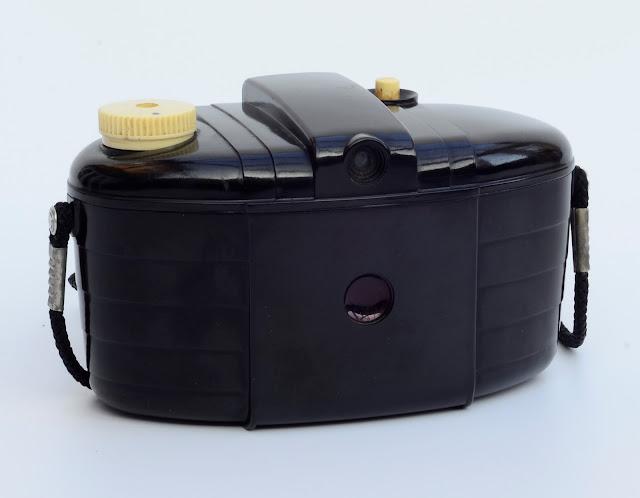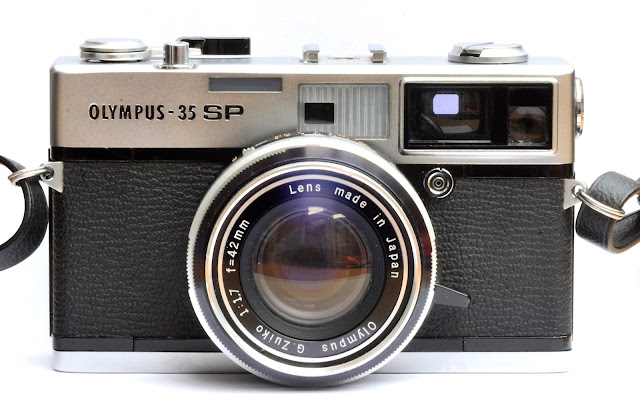Kodak Brownie 127
As an ex Kodak employee I have an interest in the cameras that we made. I saw this Brownie 127 in a charity shop for £2. The shutter was working so I brought it home.
The Kodak Brownie 127 (first model) was manufactured in England during the period 1952 to 1959. From 1952 to 1955 the front plate was plain (as in my model). From 1956 to 1959 it had a cross-hatch patterned front plate. There were two further iterations, the second and third model, with production finally finishing in 1967. These were a popular camera with over a million produced in the first two years of production. They are still easy to find and cheap to buy.
The camera has a plastic body in what could be described as an art-deco style. Without film it only weighs 220g ( nearly 8 oz). It uses 127 roll film. This is not a popular size anymore though it is still possible to buy it. It is also possible to use 120 roll and 35mm film in this camera as you will be able to see below. As far as I have discovered the lens is at fixed 65mm, f14. The shutter behind the lens is fixed at 1/50th of a second. The shutter release is not linked to the film advance. Each time you press the shutter button the shutter opens. This means that it is very easy to get double or even more exposures. Film advance is by the large white knob on the top-plate. This will only turn one way.
Film position is shown by the printed numbers on the backing paper that can be observed through the red plastic window on the back of the camera.
The top-plate only has the small shutter release button on the right hand side and the larger film advance button on the left. I have added the black dot to the film advance button so that I could index the film advance when I was using a 35mm cassette.
The bottom of the camera has a silver twist lock. Twist anti-clockwise to seperate the two parts of the camera.
The bottom part of the camera contains the lens, aperture and shutter. The upper part has the film advance mechanism and the shutter release button
I had read that it is possible to use 35mm film in the Brownie 127. As you can see below the 35mm cassette fits into place quite neatly. However the film does not cover the whole image area. But this does mean that the image covers the full width of the 35mm film which gives a good effect as seen in the pictures below. Another step that must be taken is to cover the red film window in the back of the camera. This is to prevent light getting to the film. 127 film has a backing paper to prevent exposure from the rear but the backing paper is not present in 35mm film.




.JPG)








Comments
Post a Comment